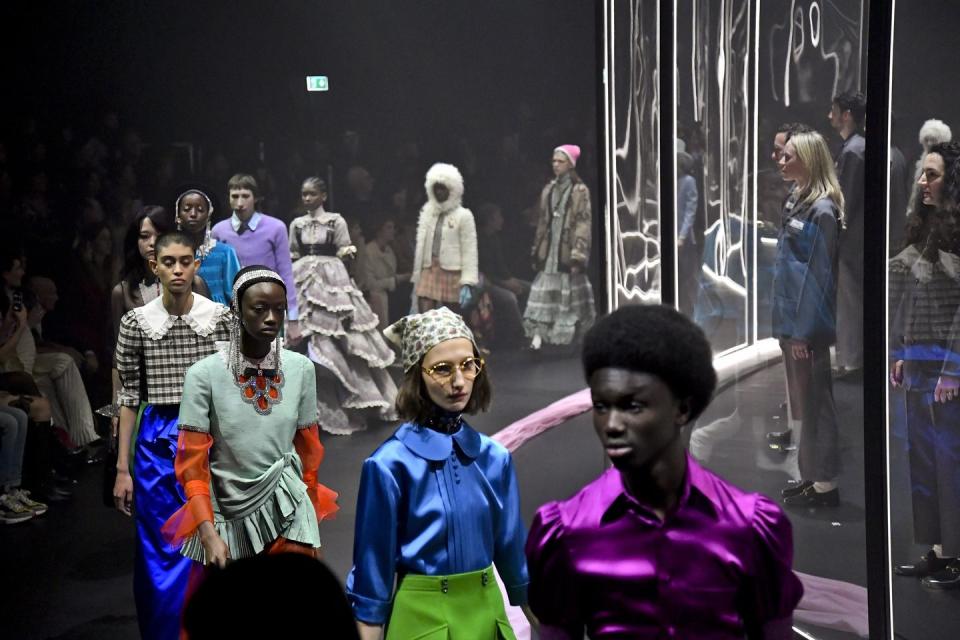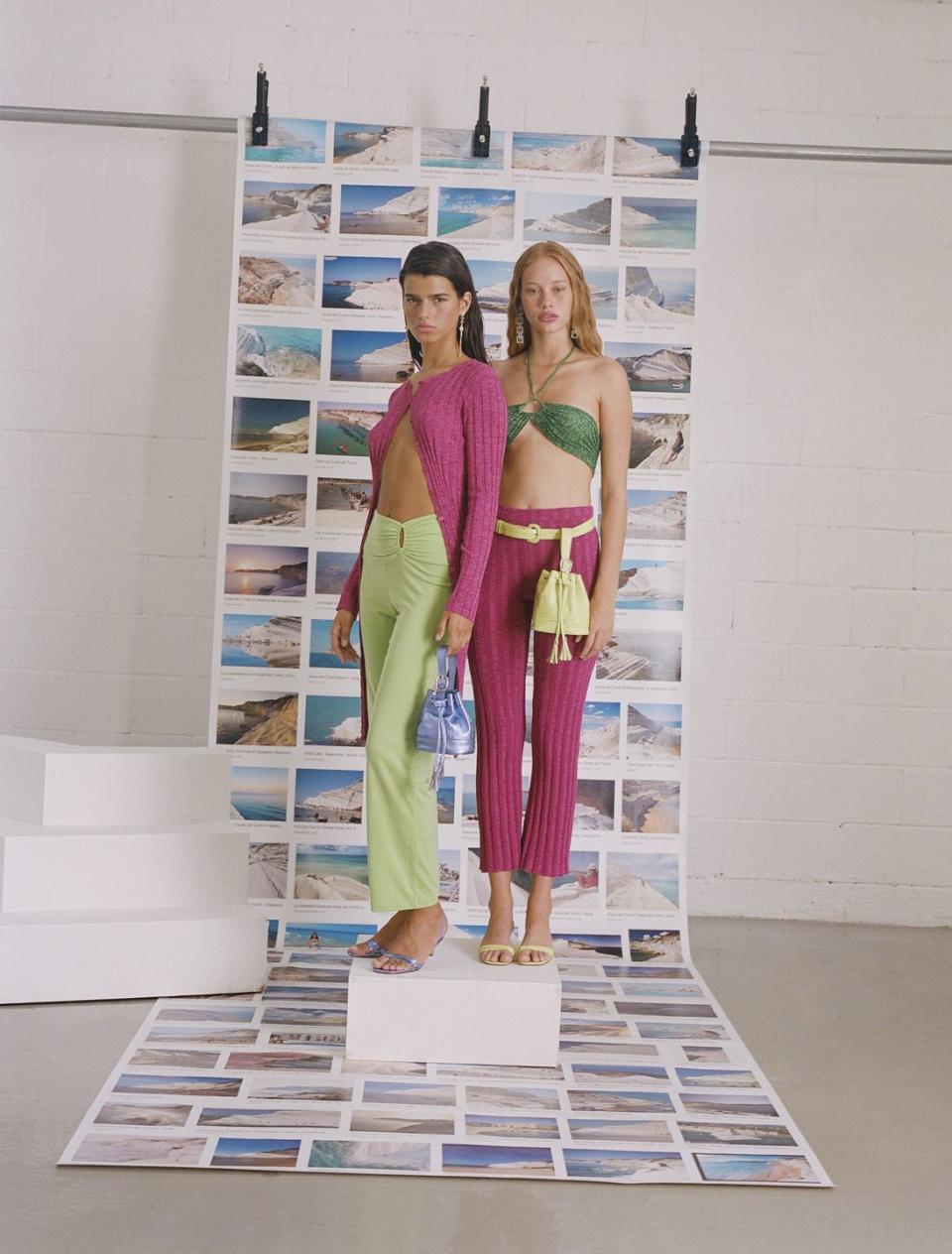Can digital really be the future of fashion week?

We’ve never spent so much time online. Virtual dates, work meetings, pub quizzes and even hairdressing consultations – we’ve quickly adapted to the social-distancing restrictions that now dictate how we live our lives. But what does all of this mean in terms of how we consume fashion, and, in particular, fashion shows?
For so long, fashion week has been a staple event on the industry calendar. However, as we're all learning, the pandemic holds no exceptions. Fashion is no different, with London Fashion Week going digital earlier this year and a number of brands, including Dior and Burberry, announcing audience-free shows or presentations that can only be watched via livestream.
Of course, this is a much bigger issue than just a temporary solution to lockdown restrictions. Fashion was already on the brink of monumental change, with pandemic restrictions simply escalating the inevitable, and forcing the industry to rethink old ways. Perhaps this speeded up already needed changes; several big labels - including Saint Laurent and Gucci - have now announced more permanent intentions to leave behind the traditional seasonal calendar, which Gucci creative director Alessandro Michele branded “stale”.

Currently, it’s not possible for fashion week to exist as it was before thanks to social-distancing rules but, beyond that, what does fashion week look like in a post-pandemic future?
One city which is leading the way in this space is Helsinki Fashion Week (HFW), which has been making waves in the industry since its debut in 2016. Over the past four years, it has continually set the standard of what it truly means to be sustainable in fashion. Now, in our current online-only world, it’s adapting further to our digitally focused lives.
“Cyberspace is transforming the way we live and work already,” founder Evelyn Mora explained. “We’re always looking at our phones and most of us will have access to the internet, so you can see that digital takes over all aspects of our lives and pushes us into multidimensional ways of living.”
“We have changed how we consume, so the need for fashion week has changed, too. Perhaps the purpose hasn’t, but the way we approach it has changed, so it’s only natural that fashion week’s format changes.”
She raises an interesting point: the industry is in need of an update. Now with fewer physical events being a possibility, how does a digital-only fashion week - or, indeed, a digitally enhanced fashion week - differ from the traditional format we’ve known for so long?

HFW, which was already heavily digitised before the pandemic, is continuing to experiment with virtual experiences for its upcoming July schedule, via 3-D fashion shows, interactive livestreams, cyber networking opportunities and an online digital designer residency. This means that designers will still showcase their clothes, but in a different, arguably more intimate way - and to a larger audience.
“Designers will be live streaming from their own homes and ateliers, meaning that they will still be creating their physical collections,” Mora explains.
Many collections will also be digitised into 3-D after the designers send the patterns to Helsinki’s lab in Paris so they can be built onto the avatar to wear (which are digitised versions of the same models who were supposed to be at the physical event in July).
“Working in 3-D is much faster and it’s more sustainable for the environment to design your prototype digitally, because you don’t mass produce. It’s only when customers order the look that it’s made from scratch,” says Mora, who says 3-D prototyping could serve as a solution to fashion’s waste problem, as brands could create more efficiently in the future, rather than over-producing - or being restricted to sample sizes.
“If the industry worked based on demand, this could curate production to put fashion in the most sustainable position possible," she explained, highlighting how the industry can learn a lot from Helsinki’s digitising techniques, to work toward a greener future.
Environmental benefits aside, do virtual shows really work in practice? Can you conjure the same feeling of excitement and electricity as the ‘real’ thing?
Cool-girl label Paloma Wool recently debuted its first virtual runway after reaching out to friends and family of the brand to model its latest collection.
“They had no briefing, all they had to do was model the pieces however they wanted. It was nice to see each individual be able to style the looks in their own way,” Tana Latorre from Paloma Wool tells us. “It may not be the same as a physical event, but it’s more accessible and it’s important to feel you can connect to a brand, especially now.”
Off the catwalk, virtual runways can serve as a leveller; instead of fashion week feeling exclusive for a select few, it’s accessible for everyone at all levels to watch.
“Paloma came up with the idea for our virtual runway in the shower one day,” Latorre explained. “[Our customers] really resonated with the fact that it featured people from all over the world with different bodies, so you could really see how the fabrics moved.”

One of the many reasons as to why the Barcelona-based brand has such a dedicated fanbase, is because it understands and works with its community. “Digital platforms could help brands invest in who its community really is and relate to things on more of a ground level,” says Latorre.
Going digital could be seen as an opportunity to help brands truly understand their community and to connect in a different way - something consumers are likely to want to see more of post-lockdown.
Helsinki Fashion Week also recognises the importance of connecting the audience to a brand, and has acknowledged this by creating an in-depth space for designers to present not only their collections but brand values. This goes somewhat further than a three-minute catwalk show and a paper press release.
“We are creating a digital universe for each designer based on what message they want to send,” Mora explains. “They can build stories that are powerful and emotional. It doesn’t require much from them and it’s so effective.
“We want to showcase the people behind the brand. Often we just dismiss this, we don’t go deeper into who they are, and that’s something that’s really important. It keeps fashion fresh and innovative.”
Although brands have no choice but to embrace digital at the moment, can this shape the future of the fashion week schedule? Will we continue to grow digitally or will fashion return to its old ways?
“Fashion week can feel like an overdose of information and I believe in a future with no seasons and brands who create timeless collections that aren’t restricted to the calendar,” says Lattore, echoing Gucci, Michael Kors and Saint Laurent’s decision to step away from the traditional format.
Of course, physical events do hold a social aspect that just cannot be replicated by the online world and arguably, seeing clothing via a screen can never truly replace the magic of seeing them move in real life. After all, fashion is about storytelling - it’s supposed to make you feel something - and a live event allows a brand to tell theirs in the most effective way possible. Catwalk shows are a place where the industry reconnects, and they allow a designer to present their vision to a room full of people - and immediately gauge a reaction. There's an electricity and emotion that a physical show conveys that we haven't yet seen replicated in their virtual forms.

“We’ve never been asked to look at the future this much,” points out Lattore. “Being able to go back to square one - if this makes us change and think about things then that’s great. I don’t think people should be discouraged by what's happening.”
There’s been a pause button pressed on fashion at the moment. The pandemic has forced the industry to rethink old habits in order to keep going. It’s an opportunity to create a different solution, and perhaps that’s not simply recreating the shows digitally, but rethinking it all completely.
Perhaps there's a middle ground; if the digital and real world combined, fashion could change for the better. A digitally enhanced fashion week doesn’t need to be a replacement entirely, instead a sustainable and more inclusive enhancement to the fashion week we are so familiar with. Combining the two, along with fewer seasons and merging gendered labels, could result in a truly modern future of fashion.
In need of some at-home inspiration? Sign up to our free weekly newsletter for skincare and self-care, the latest cultural hits to read and download, and the little luxuries that make staying in so much more satisfying.
You Might Also Like


